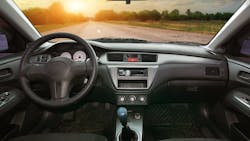First the bad news: Self-driving cars are a crazy idea, and I’m just not buying it yet. A totally autonomous vehicle with no steering wheel or brake pedal is just going too far. What about self-driving 50,000-lb. 18-wheelers going 70 on a snowy highway? Surely they have to be unsafe? And an autonomous taxi is just creepy. Maybe it’s just me.
Yes, I know it is all possible now, but are the benefits real or just perceived? The automotive companies and some large technology firms are hoping we are going to buy into the idea. Some will, some won’t.
Surveys I’ve seen indicate that a majority of us wouldn’t buy a self-driving car. One survey by a car insurance company, in fact, said that 80% of respondents would not buy an autonomous vehicle. Another survey, by J.D. Power, indicated a similar outcome, with only 20% willing to buy a self-driver. An AAA survey indicated that 75% of respondents feared self-driving cars, while one from the IEEE noted that 60% were not comfortable with them.
Then again, a sizeable number of people like the idea—obviously enough to justify all the current interest and R&D in self-driving cars. As my editorial colleague Bill Wong said in a recent blog, we are going to get them anyway. It certainly looks like it. But while I accept that conclusion, I can’t help but think that self-driving cars will end up as an expensive niche, like electric vehicles (EVs) are now. As comedian Dennis Miller used to say, “That’s just my opinion, I could be wrong.”
ADAS is the Good News
The good news is that we should appreciate all of that R&D investment in autonomous vehicles, as any new or improved technology will be of value elsewhere. Advanced driver assistance systems (ADAS) and Dedicated Short Range Communications (DSRC) are good examples. The former are already deployed in many new cars, and more will eventually adopt them. Amongst the notable ADAS features are backup cameras, adaptive cruise control, lane departure warning, automatic braking, blind spot warning, and voice control and response. My new (non-self-driving) vehicle has all of these items. It took a while to learn and adapt to them, but they have made me a safer driver.
The next big ADAS deployment will be vehicle-to-everything (V2X) communications, including vehicle-to-vehicle (V2V) and vehicle-to-infrastructure (V2I) communications that will let vehicles talk to one another, share information, and provide warnings or critical information. That communications system, the aforementioned (DSRC), is a modified version of Wi-Fi IEEE 802.11a called 802.11p. It uses 75 MHz of spectrum in the 5.8-5.9 GHz band. The standard provides seven 10 MHz channels for data rates up to 27 Mb/s rate using OFDM.
The data consists of vehicle location as determined by GPS, direction, speed, and braking status. Messages are transmitted 10 times per second to all nearby vehicles. Messages like traffic light status, congestion, road conditions, weather, construction, and other useful status information will also come from the V2I roadside units. The idea here is to avoid potential collisions.
DSRC is not here yet, but the National Highway Transportation Safety Agency (NHTSA) has mandated it for all light vehicles beginning in 2019, and in all new cars by 2023. In the meantime, a battle has developed as to what radio technology to use in vehicle-to-everything (V2X) communications. Instead of 802.11p, some companies like Qualcomm and the cellular operators are promoting 5G or cellular V2X. Some want the 5.9 GHz DSRC spectrum for expanded Wi-Fi speed and capacity.
That’s a good thing, but will future Wi-Fi interfere with DSRC? 802.11p is here now with cheap wireless modules, whereas 5G is years away. It’s uncertain how this conflict will turn out. I’m sure the auto manufacturers want to know right now.
In any case, it will take a while before enough vehicles are using V2X to make it fully useful. Still, it’s a good start. ADAS and DSRC support the driver and enhance safety overall. This, to me, is a better path toward greater safety. ADAS and DSRC gradually introduce drivers to semiautonomous control, and that will go a long way to making self-drivers more acceptable.
They say that self-driving cars will save lives. Maybe. I do believe that full adoption of ADAS/DSRC may save as just many lives, and without all the possible insurance, regulatory, and self-driving angst to come. At least implement V2X ASAP.
If self-driving cars aren’t enough to worry about, ponder the flying car implications. I’m not making this up. China is already working on flying vehicles based upon the multi-rotor drone concept. Some models would be self-guided, but others would be remotely controlled. A Chinese company recently demonstrated its EHang 184 (a single-passenger taxi drone) in Dubai. The eight-rotor craft is remotely controlled and has about a half-hour’s worth of battery charge with speed up to 100 mph. It can carry up to 220 lb.
The Federal Aviation Administration (FAA) already has its hands full managing the stunning growth of the commercial and consumer drone business. Self-piloting passenger drones are another issue to pile on. The real fun is yet to come.


